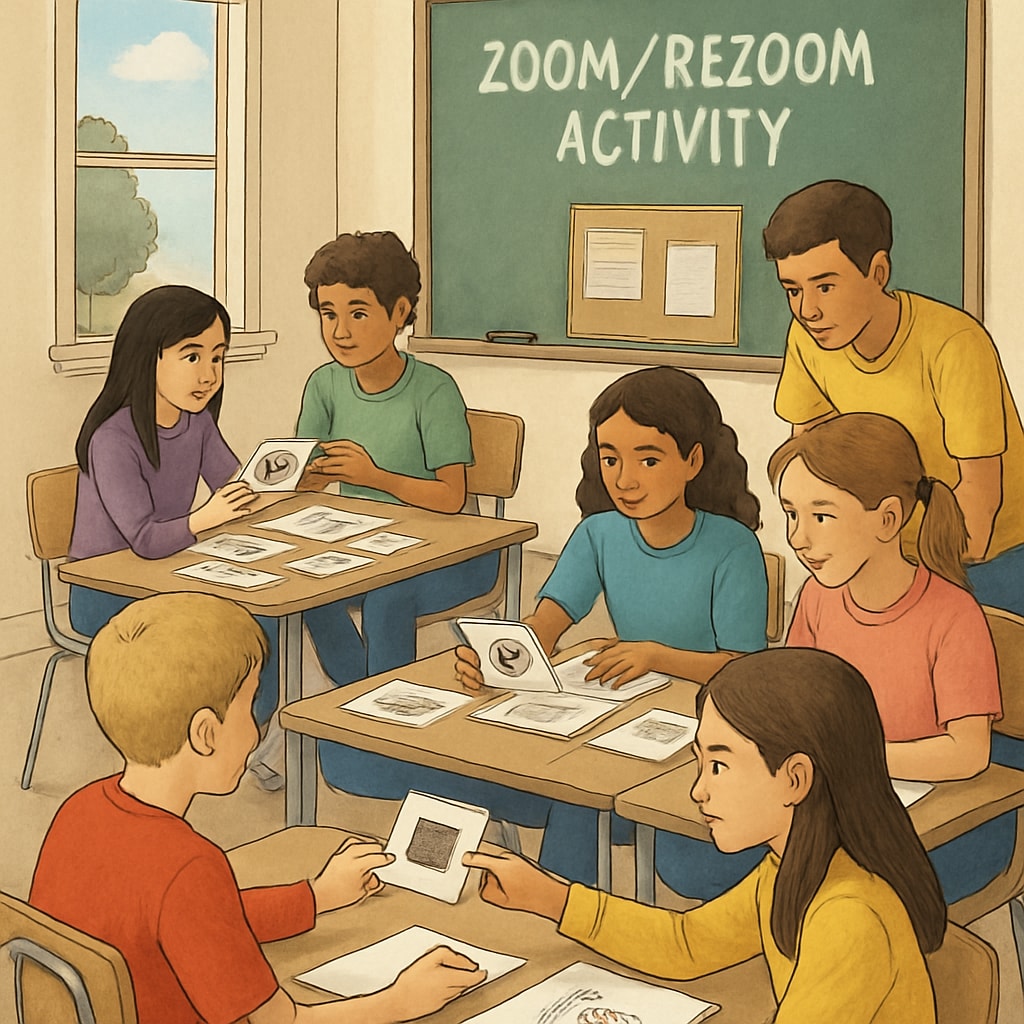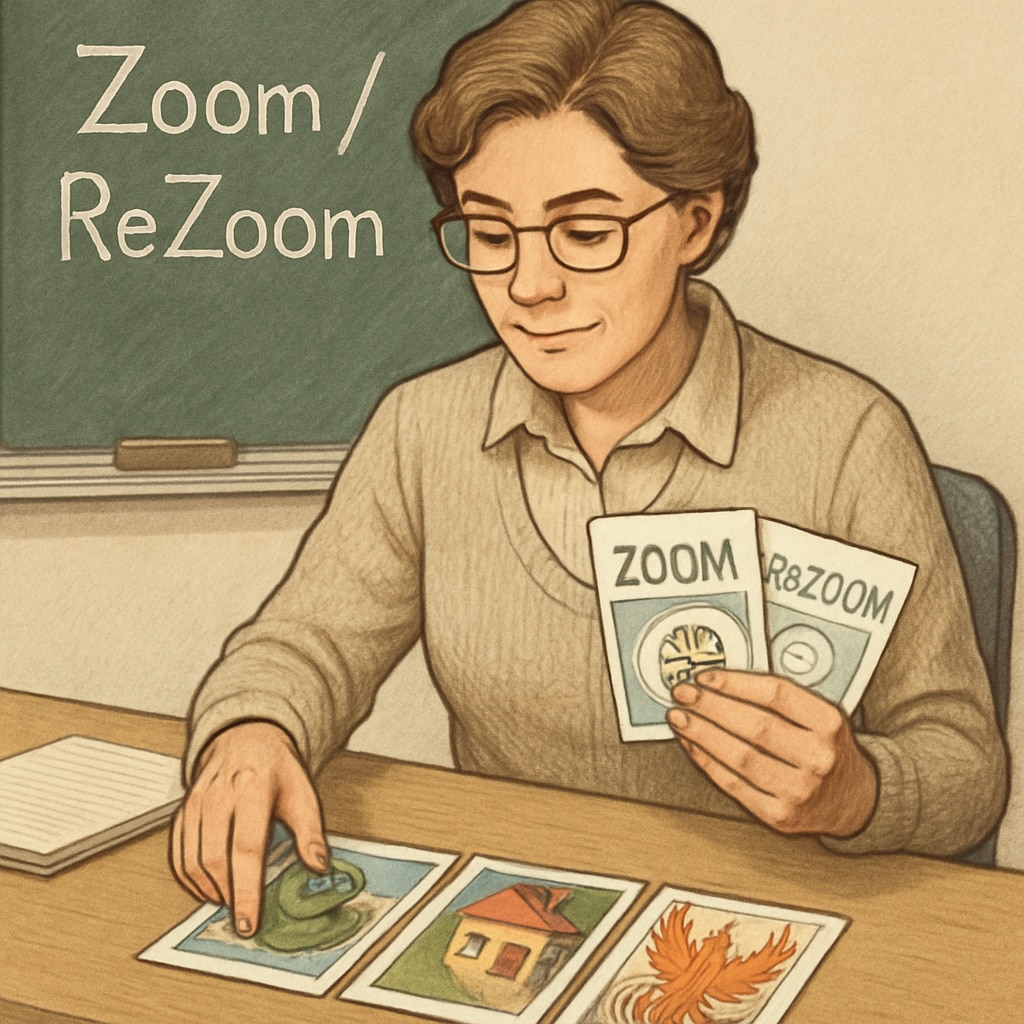Effective teaching often relies on structure and flow, especially when using dynamic learning tools like Zoom and ReZoom. These activities, which engage students in visual storytelling and collaborative problem-solving, are most effective when implemented with a clear sequencing guide. The absence of such a guide can disrupt the intended learning outcomes and diminish the impact of these activities. In this article, we will discuss the significance of sequencing guides for Zoom/ReZoom activities, explore the challenges posed by their absence, and provide practical strategies to restore optimal teaching flow.
The Importance of Sequencing in Zoom/ReZoom Activities
Zoom and ReZoom activities are widely recognized for their ability to foster critical thinking, teamwork, and creativity. However, their effectiveness depends on a carefully planned sequence. Each image or step in these activities builds upon the previous one, creating a cohesive narrative or problem-solving process. Without a proper sequencing guide, the logical progression can break down, leading to confusion among students and reducing the overall educational impact.
For example, in a Zoom activity, students often work together to piece together a sequence of images that zoom in or out to reveal a larger picture. If the images are presented out of order, the activity’s purpose—to develop observation skills and collaborative analysis—is compromised. Similarly, ReZoom activities rely on students’ ability to build on each other’s contributions in a specific sequence. Missteps in the order can lead to frustration and disengagement.

Challenges of Missing Sequencing Guides
When educators lack a clear sequencing guide for Zoom/ReZoom activities, several challenges arise:
- Confusion: Students may struggle to understand the activity’s purpose, leading to disengagement.
- Reduced Collaboration: Collaborative learning suffers when the sequence is unclear, as students may not know how to contribute effectively.
- Missed Learning Objectives: The absence of logical progression undermines the development of skills like critical thinking and pattern recognition.
- Increased Preparation Time: Teachers may spend extra time trying to reconstruct the proper sequence, detracting from other teaching responsibilities.
As a result, the educational value of these activities diminishes, and both teachers and students miss out on the full potential of these engaging tools.
Strategies for Restoring Optimal Sequencing
To ensure that Zoom/ReZoom activities achieve their intended outcomes, educators can adopt several strategies to restore and maintain proper sequencing:
- Consult Available Resources: Look for sequencing guides provided by the original activity creators or educational publishers. These guides often include step-by-step instructions and visual aids.
- Reconstruct the Sequence: If a guide is unavailable, use logical reasoning to reconstruct the sequence. Start by identifying the key themes or patterns in the activity and arrange the materials accordingly.
- Test the Activity: Before introducing it to the class, test the reconstructed sequence with a small group of students or colleagues to ensure it flows logically.
- Create Supplemental Guides: Document your reconstructed sequence and share it with other educators to save time and enhance collaboration.
- Leverage Online Communities: Platforms like Teachers Pay Teachers and educational forums often feature user-generated guides and insights for popular activities.

Ensuring Long-Term Success
In addition to restoring the sequence for a single activity, educators can take steps to prevent future disruptions:
- Digitize Materials: Save digital copies of sequencing guides and activity instructions for easy access.
- Organize Resources: Maintain a dedicated folder or binder for Zoom/ReZoom activities, complete with guides and supplementary notes.
- Train Students: Teach students how to recognize and maintain the sequence during the activity, fostering a sense of ownership and responsibility.
- Collaborate with Peers: Share best practices and resources with fellow educators to build a collective knowledge base.
By adopting these strategies, teachers can ensure that Zoom/ReZoom activities remain a valuable part of their instructional toolkit, delivering engaging and effective learning experiences for students.
Conclusion
Zoom and ReZoom activities offer unique opportunities to engage students in collaborative and critical thinking exercises. However, their success hinges on a well-structured sequence. By understanding the importance of sequencing guides, addressing the challenges of their absence, and implementing practical strategies to restore order, educators can maximize the impact of these activities. Whether through careful preparation, resource sharing, or leveraging online tools, teachers have the means to ensure that these activities continue to enrich the learning environment.
Readability guidance: This article uses short paragraphs, lists, and clear transitions to enhance readability. Active voice is prioritized, and long sentences are minimized to maintain clarity and engagement.


